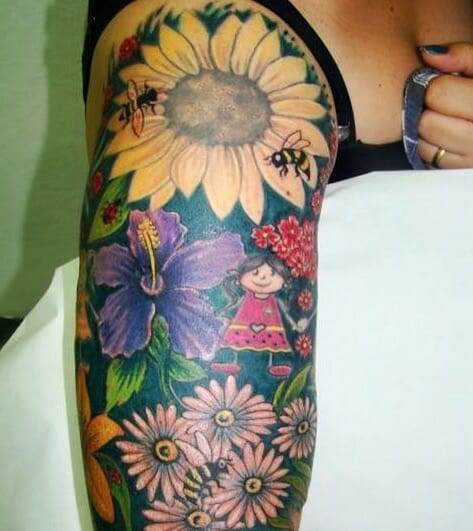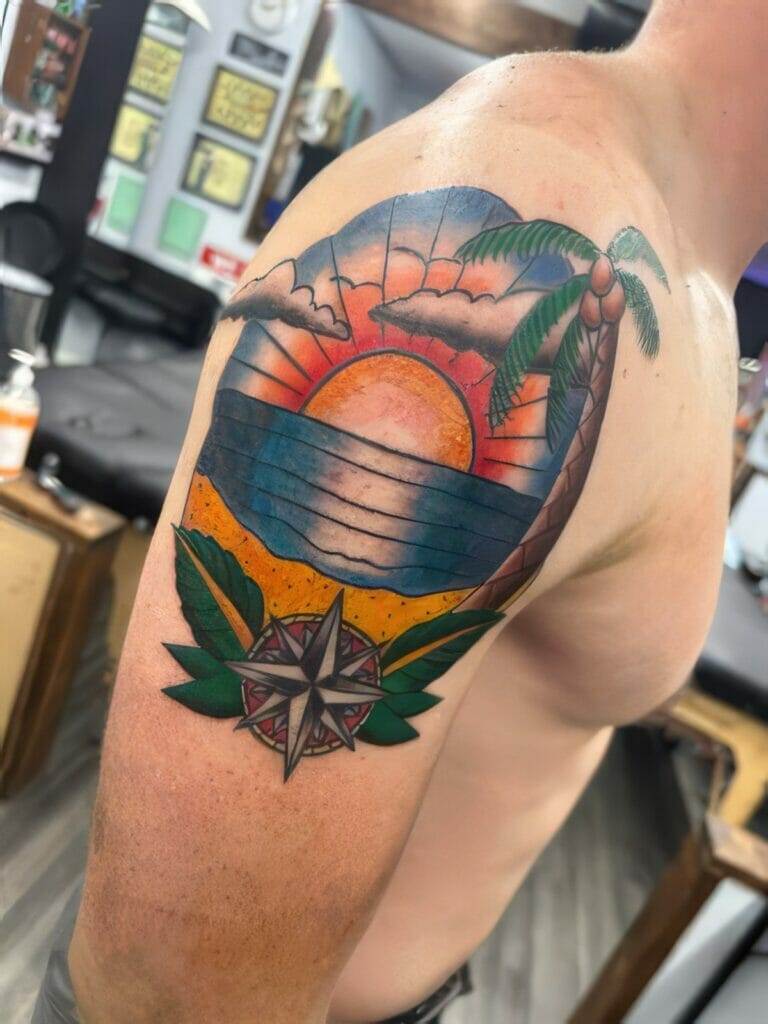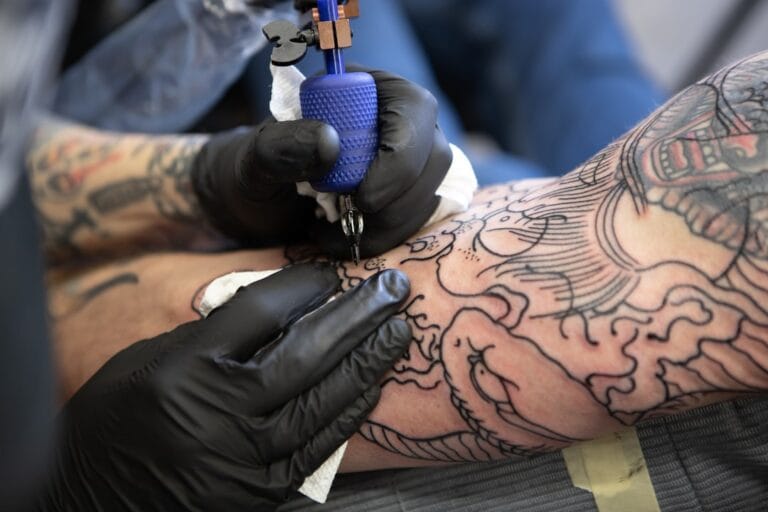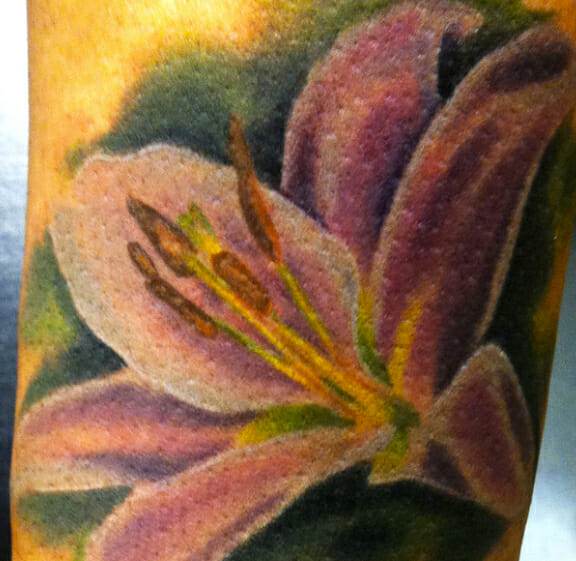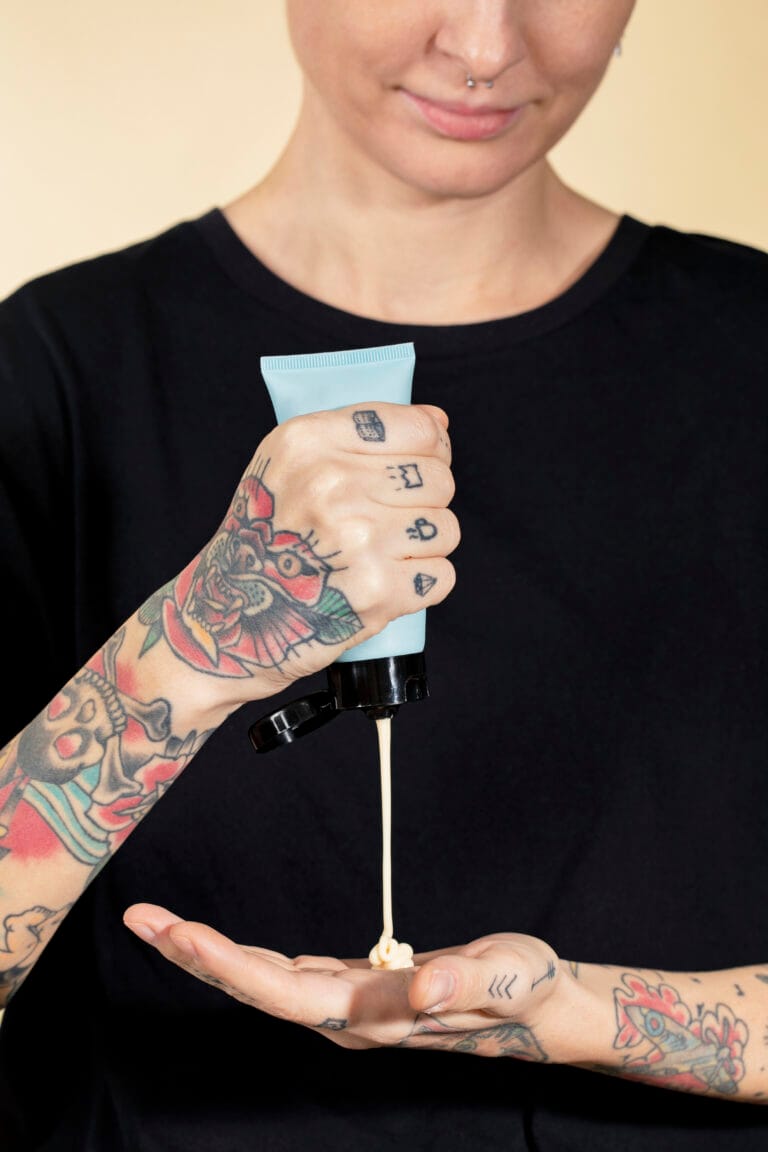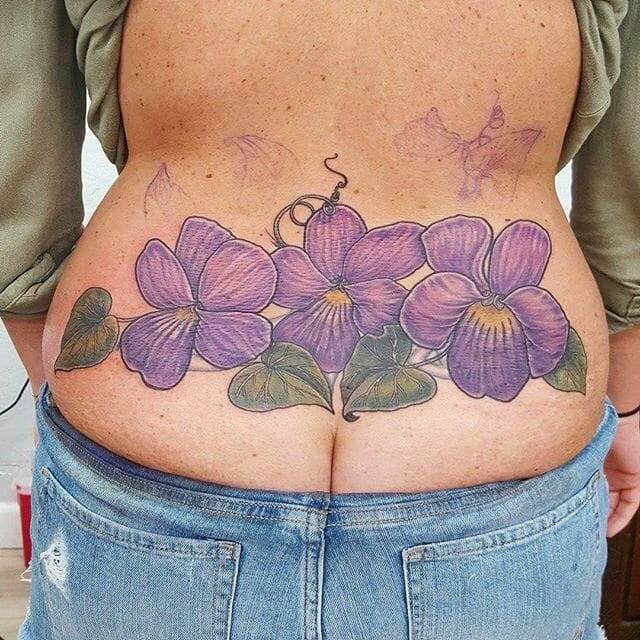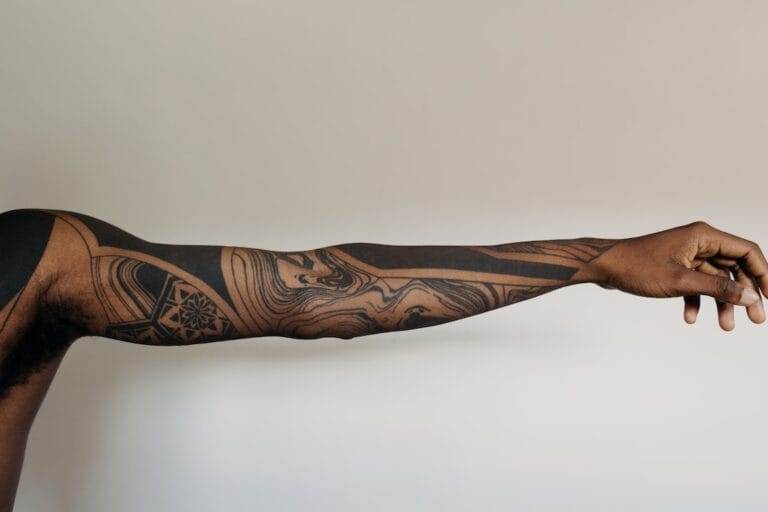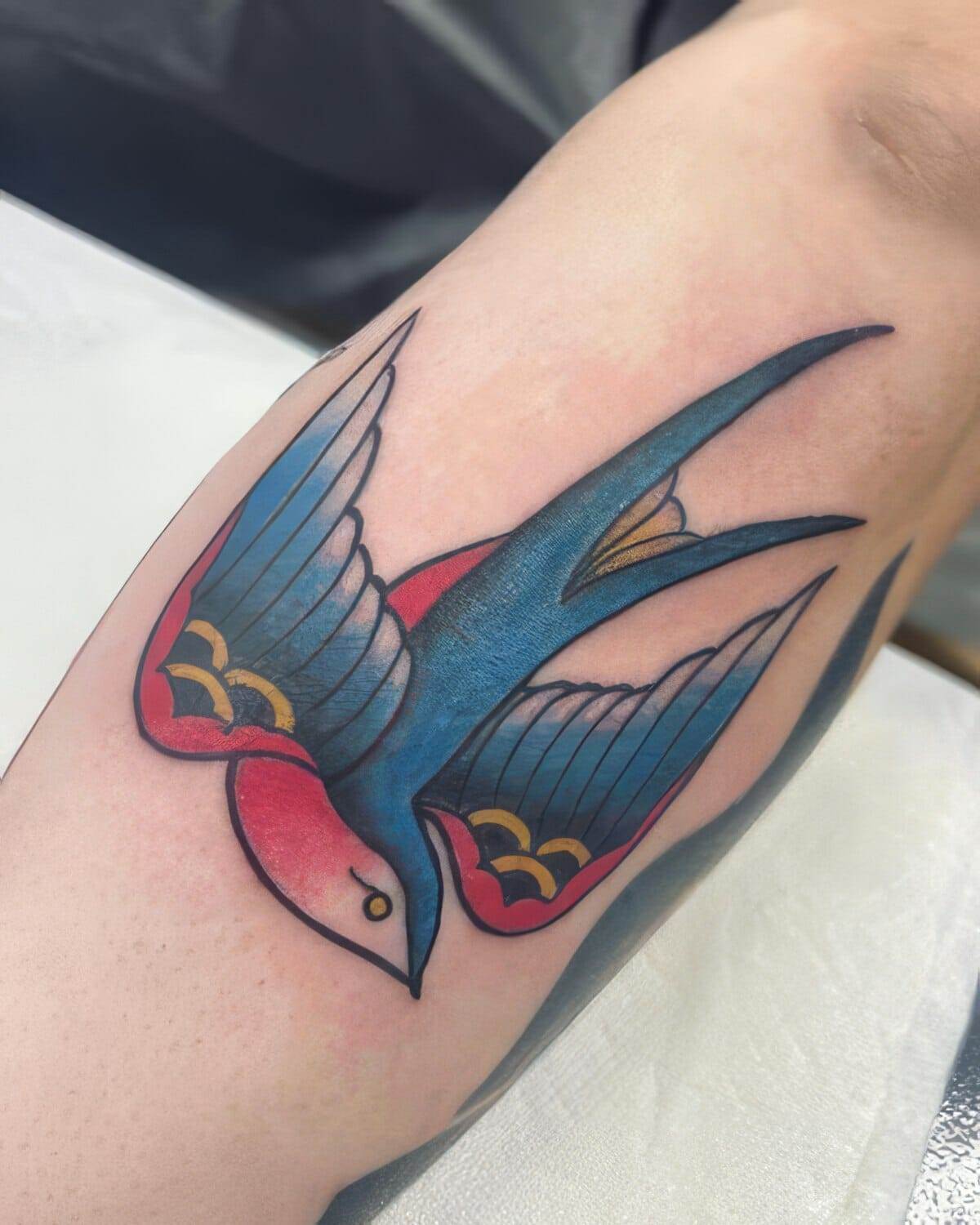
Watercolor tattoos have become increasingly popular in recent years, captivating tattoo enthusiasts with their unique and vibrant designs. Unlike traditional tattoos, which typically use bold lines and solid colors, watercolor tattoos mimic the fluidity and delicate brushstrokes of watercolor paintings. This technique creates a stunning and ethereal effect on the skin, making each tattoo a true work of art.
What sets watercolor tattoos apart from other tattoo styles is their ability to capture the essence of a painting and translate it onto the body. The use of soft colors, blending techniques, and the absence of harsh outlines give watercolor tattoos a dreamlike quality that is both captivating and visually striking. Each tattoo is a one-of-a-kind masterpiece, as no two watercolor tattoos are ever exactly the same.
The History of Watercolor Tattoos: From Traditional to Contemporary
Tattooing has a rich history that dates back thousands of years, with evidence of tattooed bodies found in ancient civilizations around the world. Traditional tattooing techniques typically involved using solid black ink and bold lines to create designs on the skin. However, as tattooing has evolved over time, artists have experimented with different styles and techniques to push the boundaries of what is possible in the world of body art.
Watercolor tattoos emerged as a contemporary style in the late 20th century, influenced by the rise of watercolor paintings in the art world. Artists began to experiment with using watercolor techniques in their tattoo designs, creating a softer and more painterly effect on the skin. This new style quickly gained popularity among those seeking a more artistic and unique approach to tattooing.
The Technique Behind Watercolor Tattoos: How it Differs from Traditional Tattooing
The technique used to create watercolor tattoos differs significantly from traditional tattooing methods. While traditional tattoos rely on bold lines and solid colors, watercolor tattoos use a more fluid and freeform approach. Instead of outlining the design with black ink, watercolor tattoos often have no outlines at all, allowing the colors to blend seamlessly into one another.
To achieve the watercolor effect, tattoo artists use a variety of techniques such as layering, shading, and blending. They may dilute the ink with water or use different shades of the same color to create depth and dimension. The result is a tattoo that resembles a watercolor painting, with soft edges and a delicate appearance.
Choosing the Right Design: Tips and Ideas for Watercolor Tattoo Enthusiasts
When choosing a design for a watercolor tattoo, it’s important to consider the unique qualities of this style. Watercolor tattoos are known for their softness and fluidity, so designs that lend themselves well to this aesthetic are often the most successful.
One tip for choosing the right design is to look for images that already have a watercolor-like quality. This could include landscapes, flowers, animals, or abstract designs. These types of images often translate well into watercolor tattoos because they mimic the natural flow and movement of watercolors.
Another idea is to incorporate elements of nature into your design. Watercolor tattoos are particularly well-suited for depicting flowers, leaves, and other organic shapes. These designs can be made even more stunning by using a vibrant color palette that mimics the hues found in nature.
The Color Palette: Understanding the Importance of Color in Watercolor Tattoos
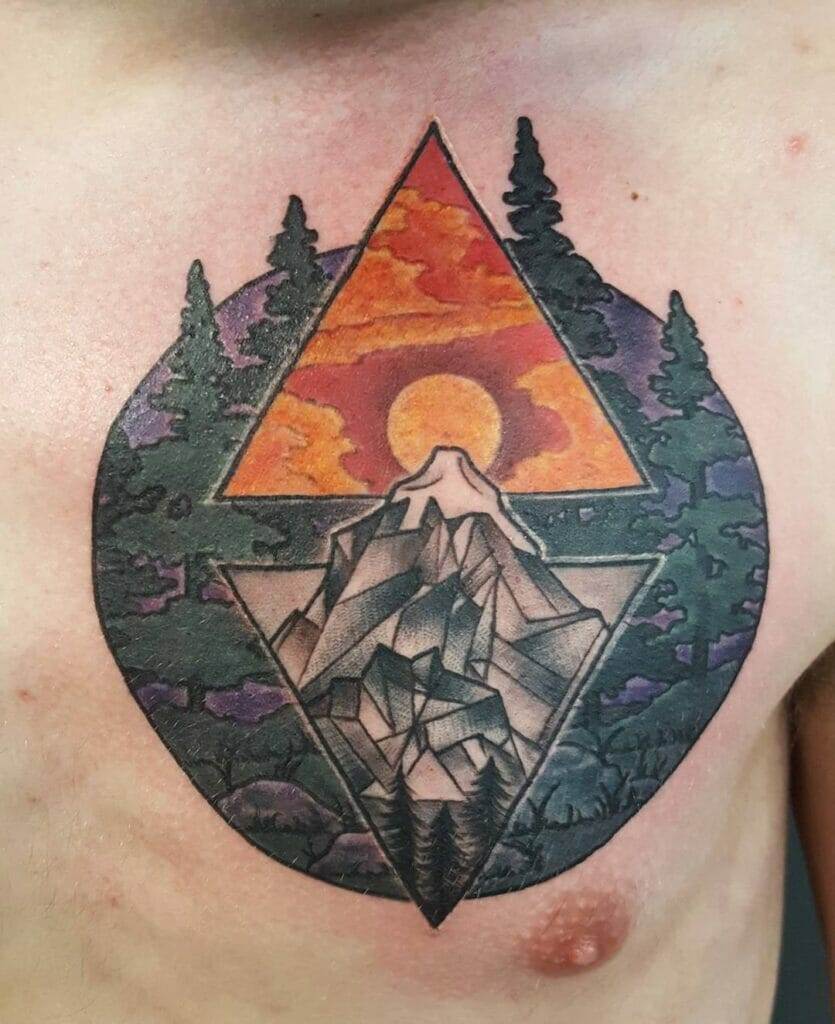
Color plays a crucial role in watercolor tattoos, as it is what gives them their vibrant and eye-catching appearance. The color palette used in watercolor tattoos can vary widely depending on the desired effect and the artist’s personal style.
Some artists prefer to use a more muted color palette, with soft pastel shades that create a dreamy and ethereal look. Others may opt for bold and vibrant colors that make a statement and catch the eye. The choice of color palette ultimately depends on the individual’s preferences and the overall aesthetic they are trying to achieve.
It’s important to note that watercolor tattoos may fade more quickly than traditional tattoos due to the nature of the technique. The colors used in watercolor tattoos are often more diluted, which can result in a softer and more delicate appearance. While this can be part of the charm of watercolor tattoos, it’s important to keep in mind that touch-ups may be needed over time to maintain the vibrancy of the colors.
The Pros and Cons of Watercolor Tattoos: What You Need to Know Before Getting One
Like any tattoo style, watercolor tattoos have their pros and cons. Understanding these factors can help you make an informed decision before getting a watercolor tattoo.
One of the main advantages of watercolor tattoos is their unique and artistic appearance. They offer a fresh and modern take on tattooing, allowing individuals to express their creativity and personal style in a visually striking way. Watercolor tattoos also tend to be less painful than traditional tattoos, as they often involve less shading and outlining.
However, there are also some drawbacks to consider. Watercolor tattoos may fade more quickly than traditional tattoos, as the colors used are often more diluted. This means that touch-ups may be needed over time to maintain the vibrancy of the design. Additionally, not all tattoo artists are skilled in creating watercolor tattoos, so it’s important to do your research and find an artist who specializes in this style.
Preparing for Your Watercolor Tattoo: What to Expect During the Process
Before getting a watercolor tattoo, it’s important to be prepared for what to expect during the process. While each artist may have their own unique approach, there are some general steps that are typically followed when getting a watercolor tattoo.
First, you will have a consultation with your tattoo artist to discuss your design ideas and preferences. They will work with you to create a custom design that fits your vision and suits the placement on your body. Once the design is finalized, the artist will begin the tattooing process.
During the tattooing process, the artist will use a combination of techniques to create the watercolor effect. This may involve layering different colors, blending them together, and using shading techniques to create depth and dimension. The process can take several hours, depending on the size and complexity of the design.
Aftercare for Watercolor Tattoos: Tips for Keeping Your Tattoo Vibrant and Beautiful
Aftercare is crucial for maintaining the vibrancy and longevity of your watercolor tattoo. Following your artist’s instructions is essential to ensure proper healing and prevent any complications.
One important aspect of aftercare is keeping the tattoo clean and moisturized. Your artist will likely recommend using a gentle, fragrance-free soap to clean the tattoo and applying a thin layer of unscented lotion or ointment to keep it moisturized. It’s important to avoid picking or scratching at the tattoo, as this can lead to scarring or color loss.
It’s also important to protect your watercolor tattoo from excessive sun exposure. UV rays can cause the colors to fade more quickly, so it’s recommended to apply sunscreen with a high SPF to the tattoo whenever it will be exposed to the sun. Wearing protective clothing or seeking shade when possible can also help prevent fading.
Watercolor Tattoos and Body Placement: Where to Get Your Watercolor Tattoo
The placement of your watercolor tattoo can greatly impact its overall appearance and longevity. Some body areas are better suited for watercolor tattoos than others due to factors such as skin texture, movement, and exposure to sunlight.
Areas with smooth skin, such as the upper arm, thigh, or back, are popular choices for watercolor tattoos. These areas provide a larger canvas for the artist to work with and allow for more intricate and detailed designs. They also tend to experience less movement and friction, which can help preserve the integrity of the tattoo over time.
It’s important to consider the visibility of your watercolor tattoo when choosing a placement. If you want to be able to show off your tattoo easily, areas such as the forearm, wrist, or ankle may be ideal. However, keep in mind that these areas are more prone to sun exposure and may require more diligent aftercare to prevent fading.
Watercolor Tattoos and Personal Expression: The Symbolism Behind Each Design
Watercolor tattoos offer a unique opportunity for personal expression and storytelling. Each design can hold deep meaning and symbolism for the individual wearing it, making it a powerful form of self-expression.
The symbolism behind watercolor tattoos can vary widely depending on the design and the individual’s personal interpretation. For example, a watercolor tattoo of a lotus flower may symbolize purity, enlightenment, or spiritual growth. A watercolor tattoo of a bird in flight could represent freedom, independence, or a desire for adventure.
Ultimately, the meaning behind a watercolor tattoo is deeply personal and can be open to interpretation. It’s important to choose a design that resonates with you on a deep level and reflects your own unique journey and experiences.
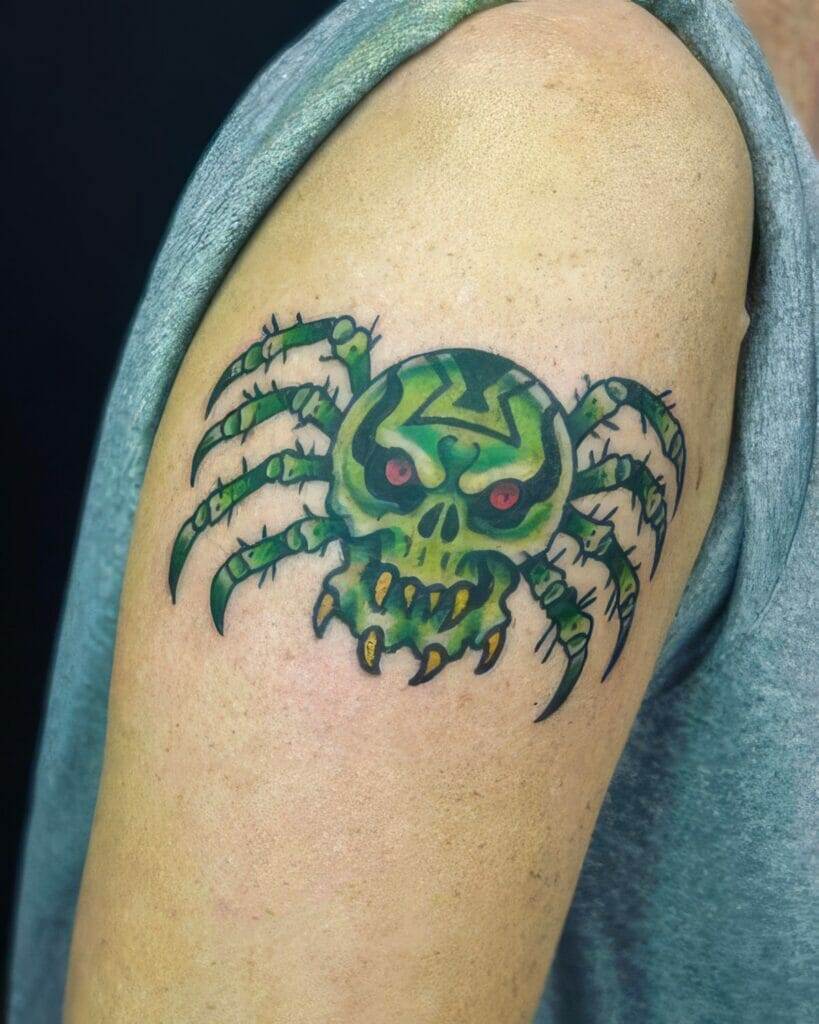
Embracing the Beauty and Artistry of Watercolor Tattoos
Watercolor tattoos have revolutionized the world of body art, offering a fresh and artistic approach to tattooing. With their unique blend of soft colors, delicate brushstrokes, and fluidity, watercolor tattoos have captured the hearts of many tattoo enthusiasts.
Embracing the beauty and artistry of watercolor tattoos means embracing the uniqueness of each design and its ability to express personal style and creativity. Whether you choose a vibrant floral design or an abstract watercolor masterpiece, your watercolor tattoo is sure to be a stunning and meaningful work of art that you can proudly wear on your skin. So, go ahead and dive into the world of watercolor tattoos, and let your imagination run wild.

